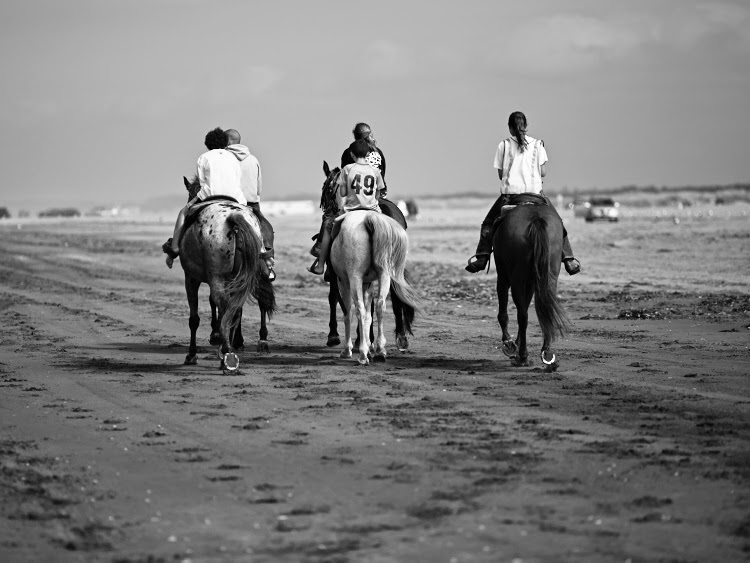I love days like this because my mind is free and I have no expectations. If I got a handful of photographs I was happy with, that would be great. If I walked away with nothing, the experience alone would be worth the effort. Time spent being creative with my friend is priceless. At the end of the day, it's fun to compare both our visions of a common place. Glenn was shooting in color while I chose my current obsession of black and white.
I'm always looking for texture and the more worn and dilapidated a thing is, the more I want to photograph it. This old wall and stairs provided me with the perfect combination of textures; metal, bricks and graffiti. I liked the angle of the stairs and moody morning light.
I'm drawn to this kind of architecture. Shooting with an extreme angle made for a dramatic and bold statement. The style of the buildings made it feel like a photograph from the early 1900s. The light also added to the drama and dimension of these beauties.
Another extreme angle that added a stylistic feel to this image. There are times when these kinds of converging lines work and other times they just don't. In this case, the lines add a great sense of energy and the clouds provide the perfect contrast to the geometry of all the other elements.
I liked this deli/market because it reminded me of New York. When I first moved to Brooklyn in 1987, I would go to a place like this for all my basic groceries. So what attracted me about this exterior was the memory of that time.
I wanted to experiment with slow shutter speeds to convey a sense of speed. Had I taken a regular photo of this biker, it would have been boring and he probably would not have stood out against the background. Following him with my camera and using a shutter speed of 1/10th of a second perfectly isolated him and added lots of energy to the shot.
This is just one of those kinds of photographs that has a mood I like. It also makes me wonder about the man. Who is he, what kind of life has he had, where is he going.? Juxtaposed with the coffeeshop blackboard and the Embassy Suites sign, he both fits and is at odds with his surroundings.
This bicycle just worked really well in black and white. Isolating it with a shallow depth of field made it feel like an intimate portrait and gave character to this pile of inanimate metal.
I loved the way this classic car looked in black and white. The light on the black made it feel chrome-like and highlighted the beauty of a design that seems to be lost on the cars of today.
During the day, we stumbled across artisans preparing for an event called "Last Thursday" that takes place every week during the summer months. I loved these little sculptures.
The font on the window, the architecture of the building and the hard sunlight falling on the chairs - all of it made for an interesting mood for me.
An almost extinct convenience. I feel like I'm looking at a piece of history when I see a payphone like this. The next time I visit Portland, it maybe gone forever.
My most favorite thing to do while walking around in a city like this is to find something extraordinary in the mundane. Black and white tends to freeze a moment like no other and forces me to see things in a way that perhaps I don't ever notice when I pass these things in real life.





%2B.jpg)














%2B.jpg)
%2B.jpg)

%2B.jpg)
%2B.jpg)
%2B.jpg)
%2B.jpg)



























